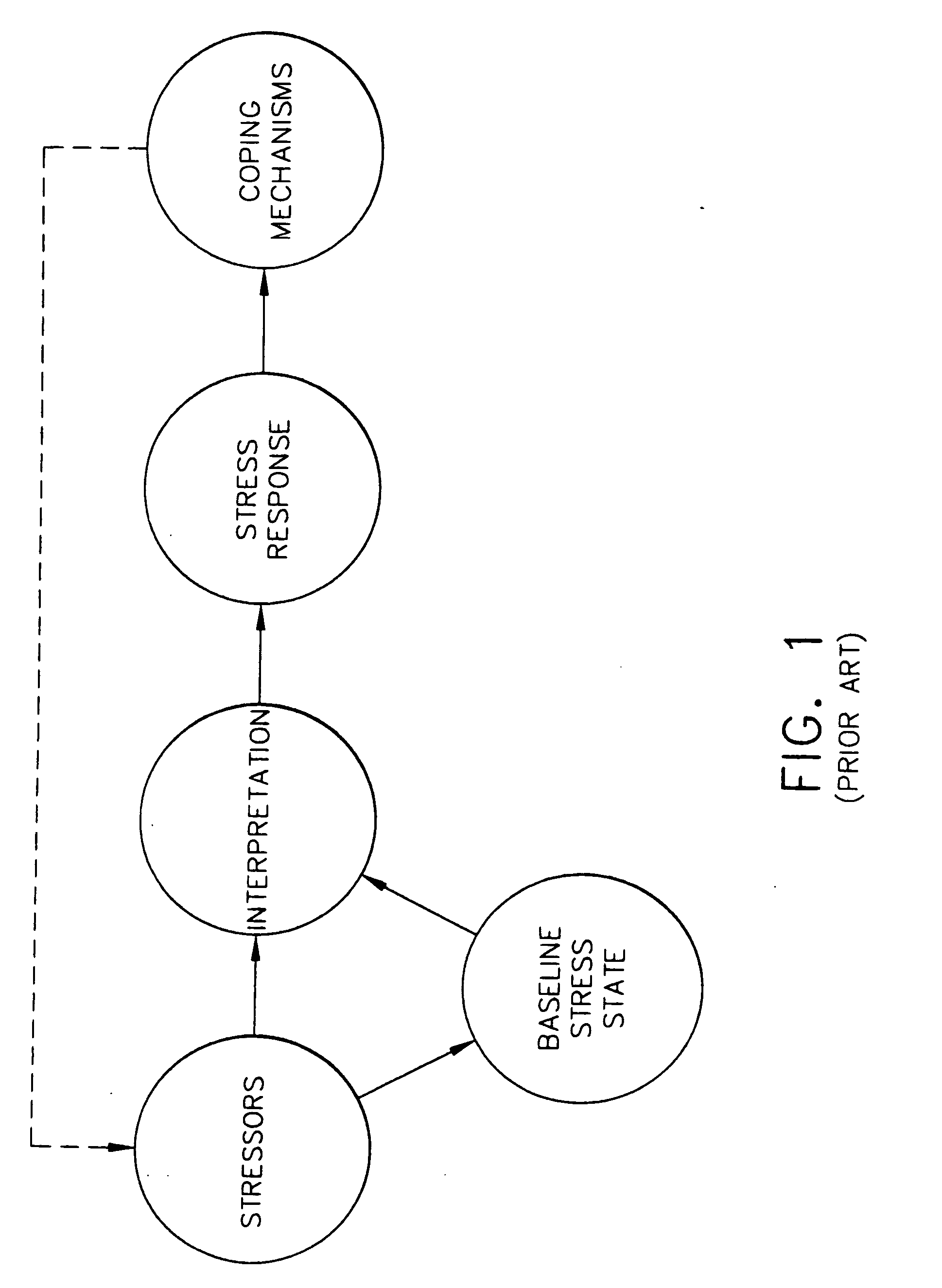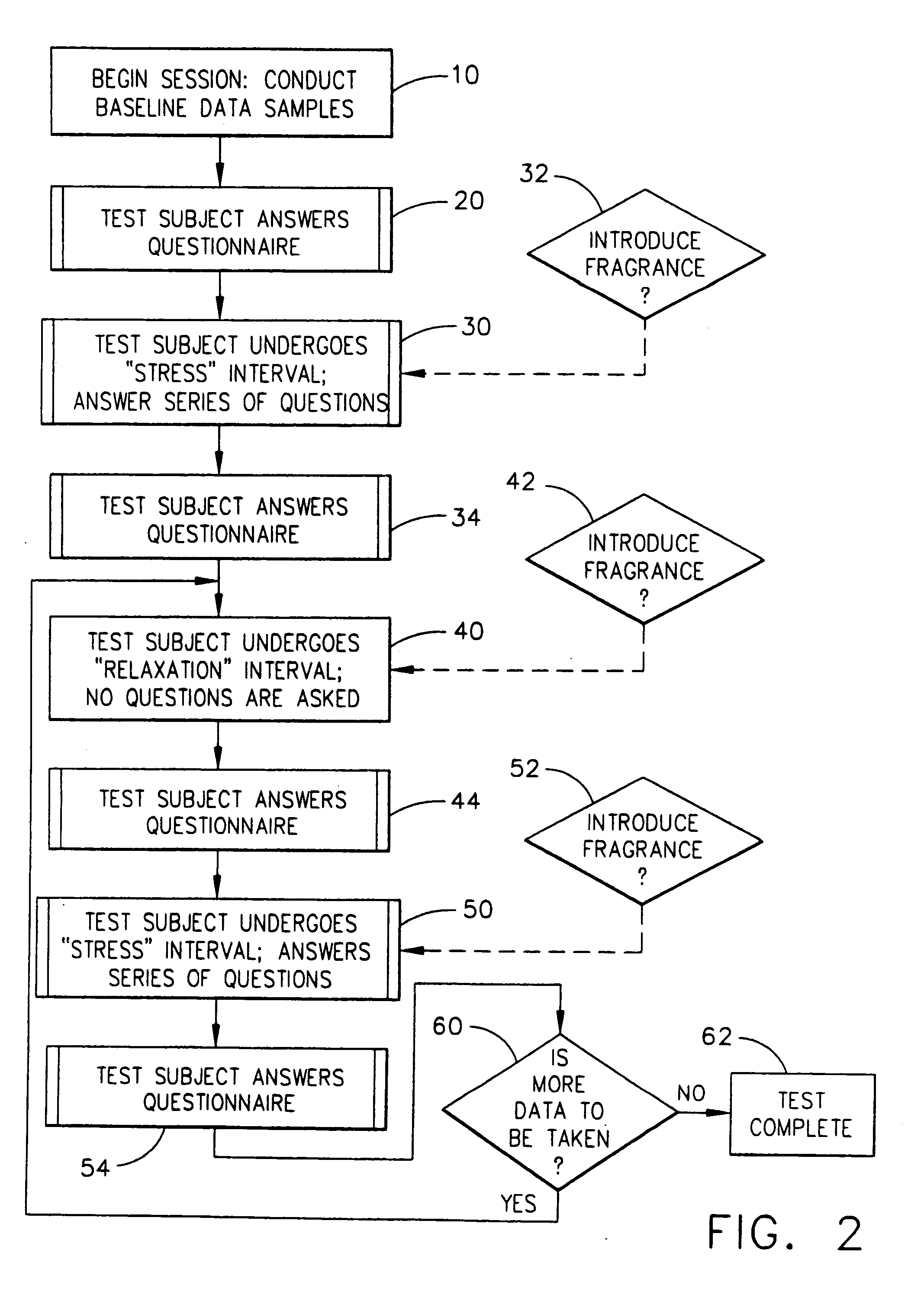Apparatus for measuring acute stress
a stress and apparatus technology, applied in the field of stress measurement methodologies, can solve the problems of measuring stress, lack of a concise definition, and difficult to measure stress
- Summary
- Abstract
- Description
- Claims
- Application Information
AI Technical Summary
Benefits of technology
Problems solved by technology
Method used
Image
Examples
Embodiment Construction
[0041] Reference will now be made in detail to the present preferred embodiment of the invention, an example of which is illustrated in the accompanying drawings, wherein like numerals indicate the same elements throughout the views.
[0042] As noted above, the present invention involves an Aromatherapy Stress Measurement Protocol (SMP) which quantitatively measures the physiological and psychological effects of fragrances (or other influences) on acute stress. Referring now to FIGS. 2-3, a testing setup is used for testing in this example at least one fragrance and a “blank.” In certain tests described herein, three fragrances will be used along with the blank. In general, the fragrances are in liquid form, and are dispensed by air movement over the liquid to create a gaseous mixture. The blank could consist of water, or plain air, or perhaps no air movement at all.
[0043] It should be noted that, for the purposes of this description of the present invention, the term “fragrance” re...
PUM
 Login to View More
Login to View More Abstract
Description
Claims
Application Information
 Login to View More
Login to View More - R&D
- Intellectual Property
- Life Sciences
- Materials
- Tech Scout
- Unparalleled Data Quality
- Higher Quality Content
- 60% Fewer Hallucinations
Browse by: Latest US Patents, China's latest patents, Technical Efficacy Thesaurus, Application Domain, Technology Topic, Popular Technical Reports.
© 2025 PatSnap. All rights reserved.Legal|Privacy policy|Modern Slavery Act Transparency Statement|Sitemap|About US| Contact US: help@patsnap.com



